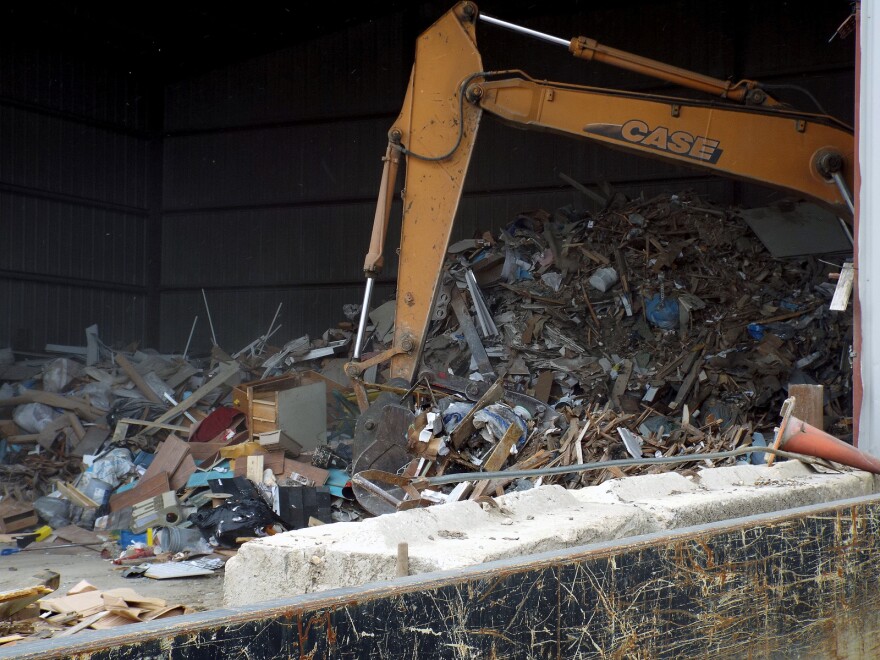McLean County's future solid waste plan could include provisions that would divert up to 74 percent of items and materials being landfilled today.
"Seventy-four percent is really ambitious and perhaps unrealistic, but that's the potential," said Michael Brown. "What can we do -- what do people want to do -- what is the community interest and what will everyone support?"
Brown is the executive director of the Ecology Action Center (EAC). The EAC is developing the new solid waste plan for McLean County. The current plan dates back to 1991. The new plan could be in effect through 2037 and works, in part, to increase the lifespan of the landfill McLean County would use in the future. The current landfill in rural Bloomington is projected to close in early 2018. McLean County waste would then be trucked to the Clinton Landfill in DeWitt County or the Livingston County Landfill.

During GLT's Sound Ideas, Brown said recycling is almost always less expensive than paying to dump at a landfill. He said diverting items from the landfill would extend the life of a landfill. The plan includes several strategies to reduce landfilled material, including working to recycle more construction and demolition waste, which makes up 28 percent of what's being dumped at the McLean County landfill and address food scraps, which make up 14 percent.
"There's money that could be made from actual compost products that can be produced from organic waste, such as food scraps," said Brown. "There's also possible energy sources from this. there are technologies that allow for a faster breakdown into a compost product while at the same time collecting gasses that could be burned for energy or used for heat."
Brown said, some composting operations are breaking even, where landfill space comes at a higher premium and the waste is hauled greater distances. He said he doubted a composting operation would be cost effective in the next five years, but reminded the plan being developed for the next 20 years.

The greatest opportunity to save landfill space is to reduce construction and demolition materials. Brown said, some businesses, such as Henson Disposal, are already sorting and recycling waste from construction sites. Waste includes wood, metal, brick, porcelain tile, aggregate, and drywall. Construction recycling facilities are seeing increased use according to Brown, and he said it shouldn't add much, if any cost, to the construction project.
"I believe to use the C and D (constructions and demolition) facility, I don't believe it adds significant cost. They have a scale, you weigh in with your truck of materials, and I think it is fairly competitive," said Brown.
Brown said if a builder is aiming for LEED status (Leadershp in Energy and Environmental Design), sorting and recycling construction waste adds points toward certification.
The next step for the draft solid waste plan is to go before McLean County's solid waste technical committee for feedback, then on to the McLean County Board's Land Use Committee. While before the Land Use Committee public comment is accepted for 90 days, and there will be a public hearing. Before it's finalized, the McLean County Board, The Town of Normal, and the City of Bloomington have to approve the plan.

